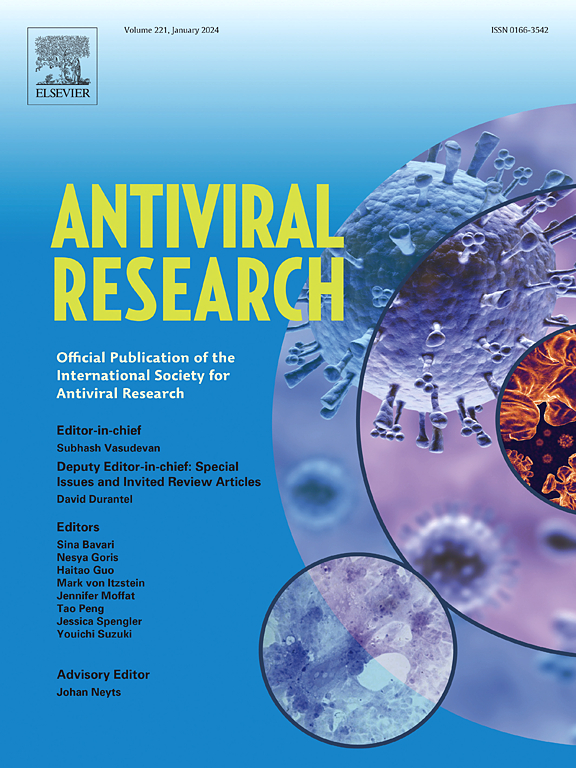The efficiency of high-throughput screening (HTS) and in-silico data analysis during medical emergencies: Identification of effective antiviral 3CLpro inhibitors
IF 4.5
2区 医学
Q1 PHARMACOLOGY & PHARMACY
引用次数: 0
Abstract
The COVID-19 pandemic highlighted the importance of accelerating the drug discovery process. The 3-chymotrypsin-like protease (3CLpro) is a critical enzyme in the severe acute respiratory syndrome coronavirus 2 (SARS-CoV-2) viral replication process and was quickly identified as a prime target for drug development. This study leverages High-Throughput Screening (HTS) to identify novel 3CLpro inhibitors. We screened a different library of 325,000 compounds, leading to the discovery of two new chemical scaffolds with selective inhibitory activity against 3CLpro. In-silico analysis and further experimental validation, elucidated the binding modes and mechanisms of action, revealing a covalent inhibitor targeting the catalytic pocket and two allosteric inhibitors affecting the monomer/dimer equilibrium of 3CLpro. The identified compounds demonstrated significant antiviral activity in vitro, reducing SARS-CoV-2 replication in VeroE6 and Calu-3 cell lines. This study highlights the potential of combining HTS and computational approaches to accelerate the discovery of effective antiviral agents, suggesting a workflow to support the research and the design of effective therapeutic strategies.
医疗紧急情况下高通量筛选(HTS)和计算机数据分析的效率:确定有效的抗病毒3CLpro抑制剂
2019冠状病毒病大流行凸显了加快药物发现进程的重要性。3-凝乳胰蛋白酶样蛋白酶(3CLpro)是严重急性呼吸综合征冠状病毒2 (SARS-CoV-2)病毒复制过程中的关键酶,并很快被确定为药物开发的主要靶点。本研究利用高通量筛选(HTS)来鉴定新的3CLpro抑制剂。我们筛选了325,000个化合物的不同文库,从而发现了两个具有选择性抑制3CLpro活性的新化学支架。硅分析和进一步的实验验证,阐明了结合模式和作用机制,揭示了一个共价抑制剂靶向催化袋和两个变烯抑制剂影响3CLpro的单体/二聚体平衡。鉴定的化合物在体外显示出显著的抗病毒活性,可减少VeroE6和Calu-3细胞系中SARS-CoV-2的复制。这项研究强调了将HTS和计算方法结合起来加速发现有效抗病毒药物的潜力,提出了支持研究和设计有效治疗策略的工作流程。
本文章由计算机程序翻译,如有差异,请以英文原文为准。
求助全文
约1分钟内获得全文
求助全文
来源期刊

Antiviral research
医学-病毒学
CiteScore
17.10
自引率
3.90%
发文量
157
审稿时长
34 days
期刊介绍:
Antiviral Research is a journal that focuses on various aspects of controlling viral infections in both humans and animals. It is a platform for publishing research reports, short communications, review articles, and commentaries. The journal covers a wide range of topics including antiviral drugs, antibodies, and host-response modifiers. These topics encompass their synthesis, in vitro and in vivo testing, as well as mechanisms of action. Additionally, the journal also publishes studies on the development of new or improved vaccines against viral infections in humans. It delves into assessing the safety of drugs and vaccines, tracking the evolution of drug or vaccine-resistant viruses, and developing effective countermeasures. Another area of interest includes the identification and validation of new drug targets. The journal further explores laboratory animal models of viral diseases, investigates the pathogenesis of viral diseases, and examines the mechanisms by which viruses avoid host immune responses.
 求助内容:
求助内容: 应助结果提醒方式:
应助结果提醒方式:


